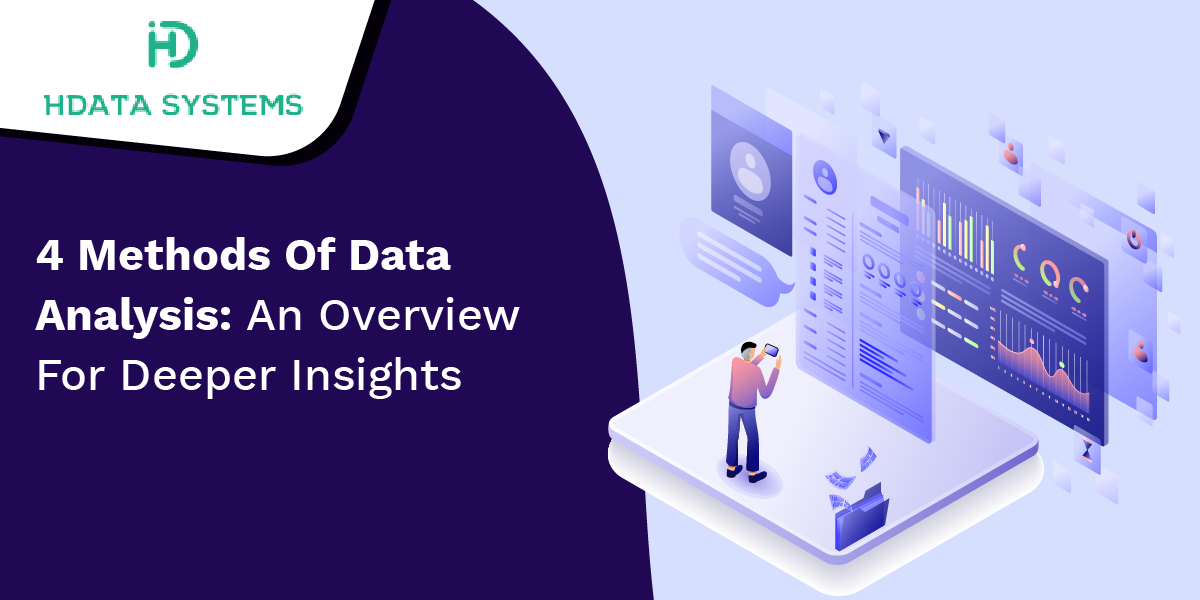According to Gartner's analytical maturity model, there are 4 methods of data analysis, which are differentiated from the simplest to the most demanding. The more complex an analysis is, the more value (competitive advantages), it offers.
Descriptive Analytics
Descriptive Analytics is about data from the past that helps answer the question: What happened? A health facility can find out how many patients have been hospitalized in the past month; a trader - what is the average weekly turnover; a manufacturer - how many items were returned in the last month etc.
Descriptive Analytics enables raw data to be juggled from multiple data sources in order to gain valuable insights into the past. But these results only show what's wrong and what's right without explaining why.
Diagnostic analytics
With Diagnostic Analytics, it is possible to clarify causes and consequences as well as interactions, analyze consequences and identify patterns. Companies choose this method of data analysis to gain in-depth insight into a particular problem. At the same time, a company should have detailed information, because otherwise data collection for each problem must be carried out individually, which is very time-consuming.
An example is how a BI solution can help healthcare customer to bring patient data from different healthcare providers together on one platform, to create reports and dashboards with useful information in order to assess event probabilities for other patients based on this, thereby reducing risks.
Predictive analytics
Predictive Analytics stands by the side to look into the future and tries to find out the following: What could or will happen in the future? This method of data analysis makes it possible to determine trends based on the results of descriptive and diagnostic analyzes, to recognize deviations from standard values at an early stage and to predict future trends as precisely as possible. Predictive Analytics uses sophisticated algorithms and modern technologies to create future forecasts. But although there are numerous advantages to this method, it is important to understand that forecasts are only estimates, the accuracy of which largely depends on how high the data quality is and how the situation remains stable.
Thanks to predictive analytics and its proactive nature, a telecommunications company can identify subscribers who are most likely to reduce their costs and plan and implement targeted marketing activities to avoid this; A management team can weigh up the risks using cash flow analyzes and forecasts before investing in the expansion of their company.
Prescriptive Analytics
Prescriptive analytics is aimed at literally prescribing: Which measures have to be taken to eliminate or prevent a future problem and to fully exploit the potential of promising trends. With prescriptive analytics, a multinational company can identify opportunities for repeat purchases in its CRM system based on customer analytics and sales history.
This state-of-the-art method of data analysis not only requires historical data, but also current information from external data sources, which enables forecasts to be updated continuously. Various advanced tools and technologies such as machine learning, business rules, scenarios, simulation models, neural networks are used, which makes implementation and management even more complex. For this reason, a company should compare the effort required with the expected added value before this method of data analysis comes into play.
Which methods are in demand?
In order to understand whether there is a preferred method of data analysis, we examine the results of various studies on this topic for the period 2016-2019.
For the 2016 Global Data and Analytics Survey: Big Decisions, PwC asked more than 2,000 managing directors which of the three categories best describes their company's decision-making process and what should decision-making be like in 2020? In addition, executives from the series of chief officers (C-Level) were also asked which method of data analysis they rely on the most. The study delivers the following results:
• Descriptive analytics dominated in the category “Decision making is rarely data-driven” (58%).
• Diagnostic Analytics is preferred in the “Partly data-driven” category (34%);
• Predictive Analytics was at the top in the "Highly data-driven" category (36%).
This survey showed that different methods of data analysis are in demand in different phases of company development. The companies that strive to make data-driven decisions consider descriptive analytics to be insufficient and also use diagnostic analytics or go one step further and let predictive analytics come into play.
Which method of data analysis can cover your needs?
Current market trends show that more and more companies are opting for predictive and prescriptive analyzes. If you have no idea how and which methods of data analysis make your decisions data-driven, a business intelligence company can surely help you out.
Harnil Oza is a CEO of HData Systems - Data Science Company & Hyperlink InfoSystem a top mobile app development company in Canada, USA, UK, and India having a team of best app developers who deliver best mobile solutions mainly on Android and iOS platform and also listed as one of the top app development companies by leading research platform.
